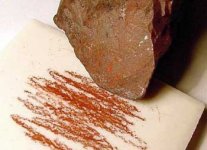Caliera
Newbie
Hello, I am hoping someone can help me to id this. I found this over the weekend
 . I thought at first it was a small cannonball but it seems to be to light. It measures 45 millimeters diameter and is 200 gms in weight. It has a smooth dimply surface and a rusty brown appearance. I stumbled across this great website whilst trying to research this and am hoping that maybe the cannonball guy might know. Any help would be greatly appreciated
. I thought at first it was a small cannonball but it seems to be to light. It measures 45 millimeters diameter and is 200 gms in weight. It has a smooth dimply surface and a rusty brown appearance. I stumbled across this great website whilst trying to research this and am hoping that maybe the cannonball guy might know. Any help would be greatly appreciated 
 . I thought at first it was a small cannonball but it seems to be to light. It measures 45 millimeters diameter and is 200 gms in weight. It has a smooth dimply surface and a rusty brown appearance. I stumbled across this great website whilst trying to research this and am hoping that maybe the cannonball guy might know. Any help would be greatly appreciated
. I thought at first it was a small cannonball but it seems to be to light. It measures 45 millimeters diameter and is 200 gms in weight. It has a smooth dimply surface and a rusty brown appearance. I stumbled across this great website whilst trying to research this and am hoping that maybe the cannonball guy might know. Any help would be greatly appreciated 



